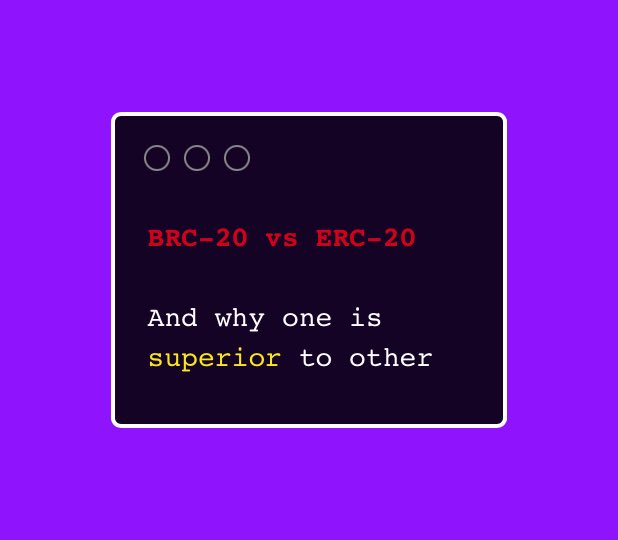
🚀 Debunking a common misconception in the Crypto world: BRC-20 superiority over ERC-20
🤔 It's crucial to understand what these tokens are. BRC-20 is essentially a piece of text, whereas ERC-20 is a computer program. BRC-20's capabilities are limited to inscription on the blockchain. ERC-20, on the other hand, allows encoding of any execution logic
📝 With BRC-20, there are no numeric balances. Instead, you need to parse everything from the text. In contrast, ERC-20 gives each address an integer balance, simplifying and enforcing the proper handling of assets
🪙 BRC-20 doesn't limit the minting of tokens. There is no way of knowing wether a token has been fully minted without parsing every “mint” text record. Conversely, ERC-20 ensures that only a predetermined amount of a token can exist, providing a more controlled ecosystem.
🚧 Contrary to popular belief, BRC-20 isn't fully on the Bitcoin blockchain. Yes, the text is stored as part of Taproot Bitcoin transactions, but Bitcoin isn't aware of BRC-20s. You need an external, off-chain tool to parse and calculate balances
🛠️ Any DeFi ecosystem built around BRC-20 will need off-chain tools. This requirement brings in a level of centralization and potential vulnerability. On the other hand, with ERC-20, everything is fully stored and operated on the blockchain
🚀 BRC-20 is also less efficient than ERC-20. Any mildly complex system built around BRC-20 heavily relies on caching. In contrast, ERC-20 is extremely efficient, cryptographically protected, and operates seamlessly on the blockchain
📚 A detailed explanation of what BRC-20 are and how they work can be found on this thread: https://illya.sh/threads/@1684348771-1.html BRC20 Ordinals Inscriptions Bitcoin
🌐 In conclusion, it's essential to understand the technical and operational differences between BRC-20 and ERC-20. While the ecosystem around BRC-20 will continue to evolve, it is unlikely that it will supersede smart-contract based DeFi
